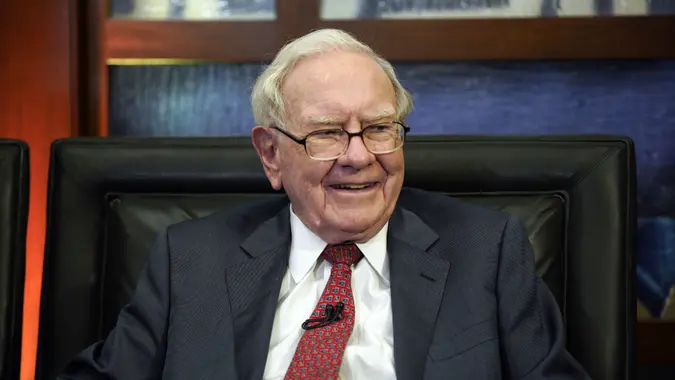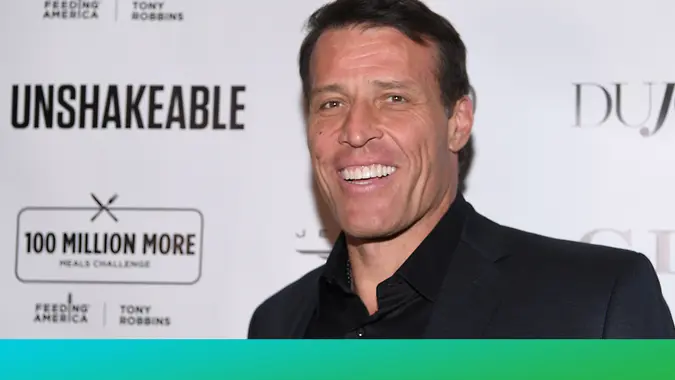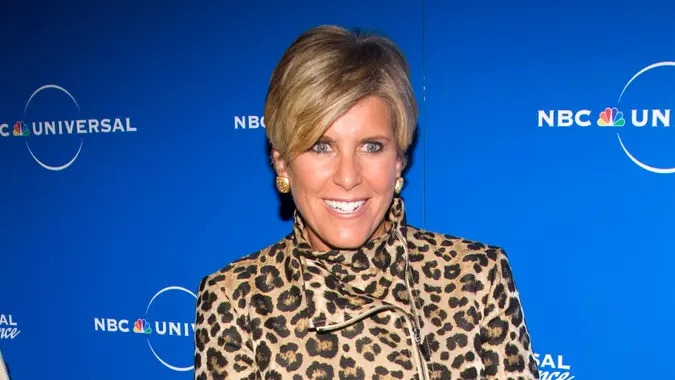Robert Kiyosaki: How Millennials Can Become Successful Investors

Commitment to Our Readers
GOBankingRates' editorial team is committed to bringing you unbiased reviews and information. We use data-driven methodologies to evaluate financial products and services - our reviews and ratings are not influenced by advertisers. You can read more about our editorial guidelines and our products and services review methodology.

20 Years
Helping You Live Richer

Reviewed
by Experts

Trusted by
Millions of Readers
Robert Kiyosaki is the founder of the popular “Rich Dad” series of blogs and videos, with 3.25 million YouTube subscribers. The financial personality takes a particular interest in providing information to millennials, as the choices they make at a younger age have a direct and significant impact on their retirement security.
One of the things that concerns Kiyosaki is that, according to a global survey by asset manager Schroders, younger generations are saving their money at a faster rate than older ones. Why is that a concern? Because saving “too much” impedes progress towards investing for a secure financial future. Here’s Kiyosaki’s take on the situation, as posted on his blog site, including some of his general advice for how millennials can become successful investors.
What Is the Difference Between Saving and Investing?
While increasing your savings rate may seem like a good thing, in Kiyosaki’s view, “excess savings” are actually a drag on your financial security. What are “excess savings”? Anything that isn’t directly tied to a short-term goal.
For example, your emergency fund, which should contain anything from three to 12 months of your expenses, should be in savings. If you’re planning on buying a home in the next few years, that money should also be in short-term savings. But all “excess” money should be invested, not saved.
Why the Need To Invest More Instead of Saving More?
As Kiyosaki explains it, saving doesn’t generate the type of growth or income that you’ll need to be financially independent. For starters, the yield you’ll earn on savings, even in high-rate environments, is typically less than half of what you might earn from a growth investment like the stock market.
On top of that, inflation erodes the value of your savings. If you’re earning 4% on a high-yield savings account but inflation is at 5%, for example, you’re actually losing money on that investment — and that doesn’t even factor in taxes. Kiyosaki stresses that you need to out-earn inflation in order to generate any type of real return.
What Are the Effects of Investing vs. Saving?
Imagine you’re lucky enough to live in a period of high interest rates where you can earn 4% on your high-yield savings accounts.
Those periods are rare and typically don’t last all that long, but for sake of argument, assume you’re able to snag such a rate for a multi-decade period. If you saved $400 per month, after 30 years, you’d have roughly $277,000. But if you instead invested that money in the stock market, which has a long-term average return of roughly 10% per year, that $400 per month would instead be closer to $900,000. That’s more than three times as much money as you would have had by merely keeping your money in savings.
How Can You Switch From Saving to Investing?
Kiyosaki recommends that investors “perfect the three E’s,” which are education, experience and excess cash.
Education
Kiyosaki stresses that those with more financial education are more likely to be financially successful, going so far as to call it “the foundation for building wealth.”
Some of the things that Kiyosaki wants investors to learn are the differences between good debt and bad debt, tax payments vs. tax incentives, corporations you work for vs. corporations you own, and the advantages and disadvantages of different types of investment classes, such as stocks, bonds, ETFs, mutual funds and real estate.
Experience
Kiyosaki believes that most people don’t learn from their investment losses and simply move from one idea to the next; however, winning investors learn and improve their investment strategy over time. According to Kiyosaki, “hot tips don’t make you rich, experience does.”
Excess Cash
One of Kiyosaki’s core philosophies in investing overall is that investors must divert some of their free cash flow towards their investments, no matter how small that amount is. Kiyosaki says that many younger investors avoid investing because they think they have no extra cash left over after paying all their bills but that this is a mistake.
In Kiyosaki’s view, you must set aside money every month even if it’s only a tiny amount, because even small investments, over time, grow to larger and larger ones. In other words, don’t let your imagined “lack of funds” prevent you from investing — take money out of your paycheck first for your investments, even if it’s only a very small sum.
The Foundation of Kiyosaki’s Advice
In addition to the “three E’s,” Kiyosaki’s general investment advice centers around two main principles: analyze your expenses and generate cash flow to pay for your liabilities. Kiyosaki wants all investors to eliminate wasted spending, particularly when it comes to things like debt payments. Kiyosaki believes investors should start small and continue to invest in assets that generate cash flow.
Ultimately, the goal is to have your assets paying enough income to not only satisfy all of your obligations but also to give you enough extra income to spend as you choose. That’s the core meaning of financial freedom to Kiyosaki, and it’s something that guides his entire approach to investing.
Are There Any Caveats to Kiyosaki’s Approach?
The main caveat to Kiyosaki’s approach is that millennials might misinterpret the advice to mean that saving is bad. It’s important for younger generations to understand that saving “too much” is a much better option than not saving at all. Although Kiyosaki points out the dangers of having “excess cash” in a savings account, that shouldn’t be confused with an admonition against saving in general.
Rather, it’s simply a reminder that a savings account shouldn’t be viewed as a true “investment” or something that can help with your long-term wealth generation. Rather, it should be limited in scope to near-term objectives, such as an emergency fund.
 Written by
Written by  Edited by
Edited by 

























